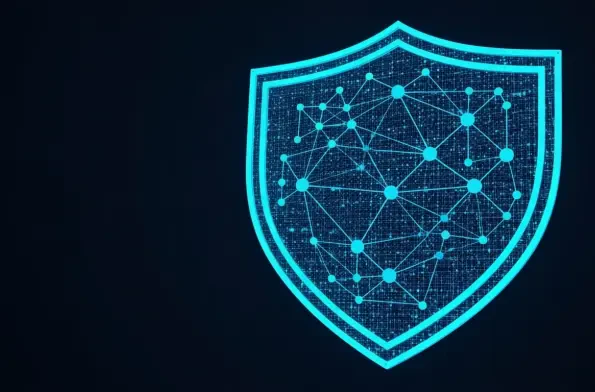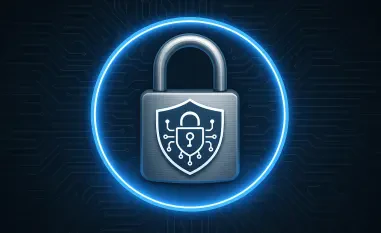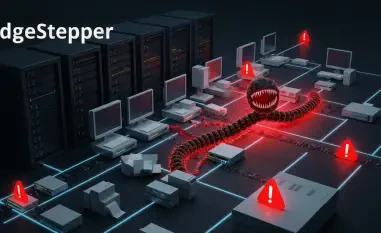Understanding Asgard Protector in the Cyberthreat Landscape
In an era where cybercrime has become a multi-billion-dollar industry, imagine a tool so sophisticated that it can cloak malicious software, rendering it invisible to even the most advanced antivirus systems, and this is the reality with Asgard Protector, a crypter tool that has gained notoriety among cybercriminals for its ability to conceal deadly payloads. As a cornerstone of modern cyberthreats, it poses a significant challenge to enterprise security, demanding attention from security professionals across the globe. Its emergence highlights a critical shift in how adversaries operate, leveraging advanced techniques to bypass traditional defenses.
Asgard Protector stands out due to its frequent association with prevalent malware families like LummaC2, a dominant infostealer that accounts for a substantial portion of its encrypted payloads. This partnership exemplifies the targeted nature of current threats, where specific tools are tailored to maximize damage through data theft and system compromise. The crypter’s role in the ecosystem is not just technical but strategic, enabling attackers to deliver malware with precision and stealth, often targeting sensitive corporate environments.
The broader context reveals a growing professionalization of cybercrime, where tools like Asgard Protector are offered through subscription models, complete with automated delivery systems via messaging platforms and dedicated customer support. This commercialization mirrors legitimate software-as-a-service models, making sophisticated attacks accessible to less-skilled criminals. Such trends amplify the risk to enterprises, as the barrier to entry for launching devastating campaigns continues to lower, necessitating robust and adaptive security measures.
Technical Mechanisms of Evasion
Core Architectural Features
At the heart of Asgard Protector’s effectiveness lies its intricate technical architecture, designed to thwart detection at every stage of deployment. The crypter often utilizes Nullsoft Installation Binaries as a delivery mechanism, exploiting their perceived legitimacy to extract malicious components into temporary system directories. Obfuscation tactics, such as file extension mismatching—where executable scripts are disguised with harmless-looking extensions—further complicate static analysis by antivirus tools.
Beyond initial delivery, Asgard Protector employs memory-based payload injection to avoid leaving traces on disk. Encrypted payloads are decrypted in real-time using algorithms like RC4, paired with LZNT1 compression, ensuring that unencrypted malicious code never appears in a form that traditional scanners can detect. This method significantly reduces the likelihood of signature-based identification, as there are no persistent files for security software to flag during routine checks.
For persistence and stealth, the crypter integrates its payloads into legitimate system processes such as explorer.exe. By blending with normal system activity, it evades suspicion and maintains long-term access to compromised environments. This approach not only masks the malicious intent but also leverages trusted processes to execute harmful actions, posing a formidable challenge to endpoint protection systems.
Advanced Sandbox Evasion Strategies
Asgard Protector’s ability to evade research and analysis is equally impressive, particularly through its innovative sandbox detection methods. Unlike conventional fingerprinting techniques that check for specific virtual environment indicators, this crypter performs network connectivity tests by pinging randomly generated, non-existent domain names. In authentic systems, these pings fail, allowing the malware to proceed with its operations undetected.
However, in sandbox environments where security tools often simulate network responses, successful pings signal a controlled setting, prompting the malware to halt execution. This clever differentiation prevents researchers from capturing active payloads or observing behavioral patterns, stalling efforts to develop countermeasures. Such adaptability underscores the crypter’s design focus on staying ahead of analytical tools used by cybersecurity experts.
Challenges in Detection and Response
The dynamic evasion methods employed by Asgard Protector create substantial hurdles for security teams tasked with safeguarding organizational assets. Its reliance on memory-based operations means that traditional file-scanning approaches are often ineffective, as there are no static artifacts to analyze. This invisibility to conventional tools forces defenders to rethink their detection paradigms in favor of more proactive monitoring.
Compounding the issue is the frequent misclassification of Asgard Protector by antivirus solutions, sometimes confused with other crypters like CypherIT due to overlapping techniques or shared code elements. Such errors lead to inadequate threat responses, as signatures and rulesets fail to address the specific behaviors of this tool. The result is prolonged exposure to risk, with malware lingering undetected in critical systems.
Moreover, the limitations of signature-based detection are starkly evident against such sophisticated crypters. Static signatures cannot keep pace with the rapid evolution of obfuscation and injection tactics, rendering many legacy systems obsolete. Addressing these gaps requires a shift toward adaptive strategies that prioritize real-time analysis and anomaly detection over outdated methodologies.
Payload Distribution and Industry Impact
Analysis of Asgard Protector samples reveals a clear pattern in payload distribution, with LummaC2 dominating at 69% of encrypted instances, positioning it as the primary threat facilitated by this crypter. Other malware families, such as Rhadamanthys at 11%, alongside smaller shares of threats like ACRStealer and Vidar, also leverage this tool, showcasing its versatility in supporting diverse attack vectors. These statistics highlight a focused yet varied threat landscape orchestrated through a single obfuscation service.
The implications of this distribution extend deep into the cybercrime ecosystem, illustrating a symbiotic relationship between crypter services and commodity malware developers. This synergy enables a streamlined supply chain for malicious tools, where encryption capabilities are paired with destructive payloads to maximize impact. As a result, enterprises face an amplified threat surface, with coordinated attacks becoming more frequent and damaging.
For industries reliant on digital infrastructure, the trend poses severe risks, as stolen data and compromised systems can lead to significant financial and reputational losses. The growing accessibility of such tools through commercialized models further exacerbates the issue, democratizing advanced attack capabilities. Consequently, organizations must invest in multi-layered defenses that address both the technical sophistication and the operational scale of these threats.
Defensive Strategies and Future Outlook
Countering Asgard Protector demands a strategic overhaul of defensive measures, starting with behavioral analysis to identify anomalous activities that signature-based tools miss. Memory scanning plays a crucial role in detecting in-memory payloads that evade disk-based checks, while network traffic monitoring can uncover sandbox evasion attempts through unusual domain pinging patterns. Together, these approaches form a comprehensive framework for identifying and mitigating this elusive threat.
Emerging technologies also offer promise in this ongoing battle, with diverse analysis environments designed to resist malware fingerprinting gaining traction. Updated threat intelligence feeds, enriched with real-time data on crypter behaviors, empower security teams to stay ahead of evolving tactics. Additionally, machine learning models trained on behavioral indicators can enhance detection accuracy, providing a proactive edge against sophisticated adversaries.
Looking ahead, the arms race between malware developers and defenders is set to intensify, with crypters adopting tactics reminiscent of advanced persistent threats. Rapid evolution in obfuscation and delivery methods will continue to challenge static defenses, pushing the industry toward dynamic, intelligence-driven solutions. Preparing for these developments requires sustained investment in research and collaboration to anticipate and neutralize the next generation of cyberthreats.
Conclusion and Key Takeaways
Reflecting on the detailed examination of Asgard Protector, it becomes evident that its sophisticated evasion techniques pose a substantial barrier to traditional cybersecurity measures. The crypter’s ability to cloak payloads and outsmart analysis environments underscores a pivotal moment in the fight against digital threats. Its dominance in facilitating malware like LummaC2 amplifies the urgency for innovative responses from the security community.
Moving forward, organizations need to prioritize the adoption of adaptive, multi-layered strategies that go beyond conventional antivirus tools. Implementing solutions such as real-time behavioral monitoring and enhanced memory analysis emerges as critical steps to detect and disrupt such advanced crypters. Furthermore, fostering industry-wide collaboration to share threat intelligence proves essential in building resilience against the ever-evolving tactics of cybercriminals.
As the cyberthreat landscape continues to shift, staying proactive is identified as the key to safeguarding sensitive systems and data. Investing in cutting-edge technologies and cultivating a culture of continuous learning among security teams offers a pathway to mitigate future risks. Ultimately, the battle against tools like Asgard Protector demands not just reaction, but anticipation, ensuring that defenses evolve in tandem with the ingenuity of adversaries.













